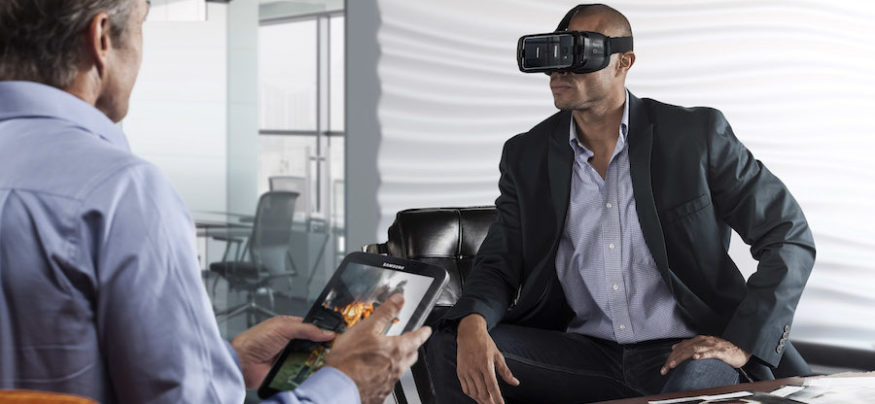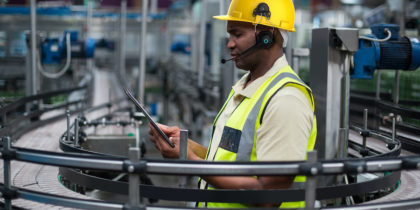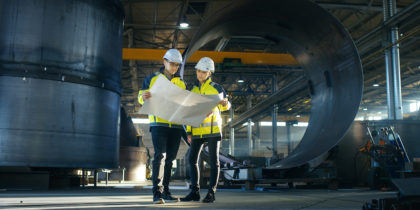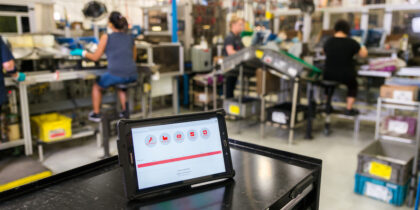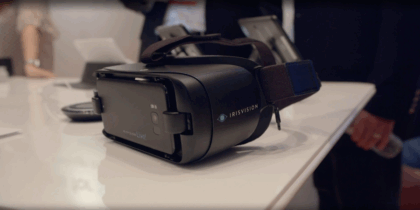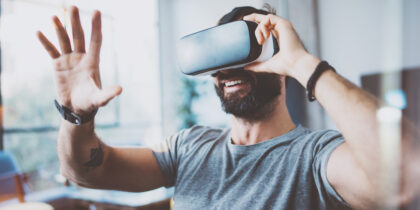More and more enterprises are finding new and innovative ways to use 360 video and virtual reality technology for marketing, training, healthcare and entertainment. For many of these organizations who have already discovered the benefits of VR experiences for their customers, the question is now whether or not to bring content production in-house.
Working with an experienced VR production company certainly has its benefits, especially when first getting started — including the peace of mind that your project will be done right the first time. But in the long run, it may prove more efficient and cost-effective to implement 360 video production in-house. And, as the technology improves and the cameras and software become easier to use, the barriers to entry are lower than ever.
Here are several real-world use cases of VR experiences to give you some ideas of how 360 video technology is being used in various industries, and how you might integrate it into your own business.
Event Production and Live Entertainment
VR is great for immersive live events, and 360 video is one of the most compelling ways to bring your virtual audience into your production. Whether it be live music, a conference keynote or a festival — immersive 360 video can increase viewership by allowing users all over the world to tune in.
Professional grade 360 video cameras such as the Samsung 360 Round offer great options to integrate into your existing event production systems, with SDI and Ethernet connectivity that allow you to live broadcast 360 directly to popular social media platforms.
Destination Marketing
VR is a powerful medium for destination marketing because it can transport the viewer anywhere in the world and situate them more effectively than traditional video formats. What better way is there to experience your vacation before you book?
Working with skilled production professionals can yield amazing results, but could also be cost prohibitive for some organizations considering the sheer volume of content they may need to capture. Destination marketing teams may benefit from learning the 360 video production workflow and bringing production in-house to optimize the messaging — especially since there can be so many activities to capture, many of which may differ somewhat depending on the season.
The Ultimate Guide to 360 Video Production
Everything you need to start creating 360 video, from pre-production to post and distribution. Download Now
Service providers and outfitters can also be a source of revenue, paying to produce custom VR content as part of a showcase.
Corporate Training
Organizations are finding that VR provides a uniquely immersive, memorable and distraction-free environment for trainees. It can also save costs on travel, equipment and training facilitators, given that training in a VR environment can occur at multiple locations simultaneously.
For a standardized module, it might make sense to hire a production company to create a uniform experience across your company, but for curricula that have to be changed or updated frequently, it would probably be more beneficial to have your own equipment in-house to produce new content on the fly when needed.
Healthcare and Mental Health Professionals
In the medical and mental health industries, VR is being used to remarkable success for a variety of purposes, from treating dementia to delivering drug-free pain management.
Healthcare organizations who bring 360 video production in-house can increase the turnaround time on new content. Given how new the technology is, these types of treatments are often still experimental, and need clinical studies and testing to prove results. Being able to quickly produce and edit relevant content can help to reduce costs over time, considering the number of rounds testing tends to require.
Real Estate and Commercial Facility Tours
There’s no medium more convincing than 360 video when it comes to showing real estate properties, industrial facilities or commercial buildings remotely. Whether you’re selling luxury homes, or need buy-in from international partners on a new industrial facility, immersive video makes simple, 2D floor plans come alive — giving the viewer a complete and detailed sense of presence in any building or locale.
Scheduling professional production crews can be difficult when you have a steady stream of new properties in different locations around the world, and cost prohibitive if these crews have to travel to each location on your dime. Organizations with their own equipment can capture facilities and properties as needed. Depending on the intended use, this content may not need extensive post-production work, and could benefit from a conveniently portable camera like the 360 Round that features automatic stitching and live streaming capabilities.
But Wait — There’s More
While some of these ideas might get your gears turning, they’ve really only scratched the surface of the many valuable business use cases for 360 video. Today’s cameras are more advanced and easier to plug into an existing production workflow than ever before. If your organization is willing to take that step and learn something new, you’ll find there are many rewards to deploying immersive video.
Ready to learn more? Dive into our Ultimate Guide to 360 Video Production for more insights on 360 content creation, from pre-production to post.
